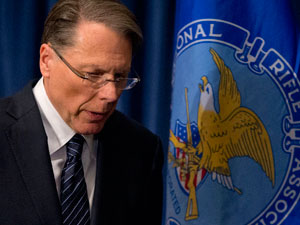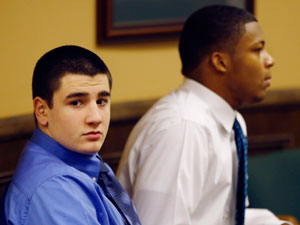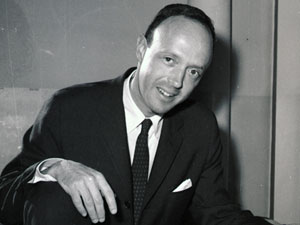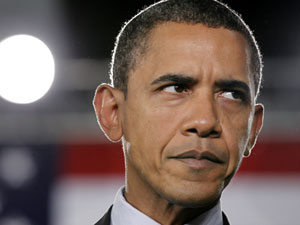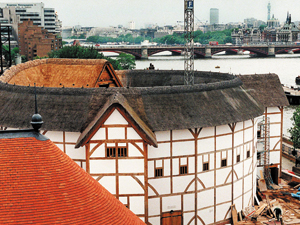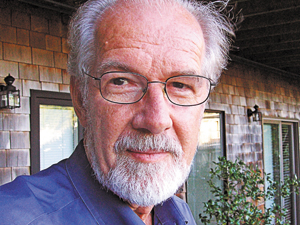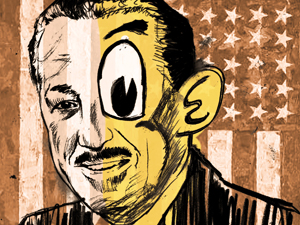Cue the Tumbrils…
Queens, N.Y.
However phony the cry “Fix the Debt!” may be [“Stacking the Deck,” March 11/18], it seems the superrich have prevailed. Their castle was gallantly defended at the ramparts by their minions (vanquishing loophole closures and taxes on their gold). The superrich will continue to live in comfort in the castle, and outside, the country will be in turmoil. But sooner or later the castle dwellers will hear the roar from outside…
G.M. CHANDU
King Coal Deposed
Toronto
Kudos for suggesting that the climate crisis requires a radical solution in “The Keystone Test” [March 11/18]. But when it comes to coal-fired electricity plants, your solution isn’t radical enough. The answer isn’t improved emission standards; it’s the elimination of coal as a fuel. Utopian? Not in Ontario. By 2014, this province will have closed its entire fleet of coal-burning power facilities, which at their peak produced as much air pollution as 6 million cars. And many of the jobs connected to coal combustion will be preserved because the plants are not being destroyed; they’re being converted to burn cleaner things such as natural gas and sustainably harvested wood pellets. Ontario is proving that an advanced industrial economy can renounce the most climate-destructive fuel while still providing sufficient power. What we need from The Nation is not more discussion of emission standards but insistence that the “zero option” is now entirely viable.
GIDEON FORMAN, Canadian Association of Physicians for the Environment
Aquarian Love-Rock Be-In
Oakland, Calif.
About author Seth Rosenfeld’s letter on Berkeley in the late ’60s [March 11/18]: the writer either never attended a performance of the Living Theatre’s Paradise Now or didn’t understand what was going on. “Stripping down and lighting up” was not a disruption of the performance; it was one of the goals of the performance. Audience participation (of whatever kind) was what the theater troupe was trying to incite. It didn’t follow a typical script.
DAVID WIDELOCK
The Bureaucrats of Academe
Amherst, Mass.
After asking “When was the last time a college or university president produced an edgy piece of commentary, or took a daring stand on a contentious matter?” [“University Presidents—Speak Out!” March 11/18] Scott Sherman takes us way back to the presidencies of James Conant, Robert Hutchins, Kingman Brewster and Clark Kerr and, working his way up to the present, cites a few examples of leaders who have spoken out on issues that are “closer in to higher education.” He ends his timely and provocative piece by citing a 2001 article by Theodore Hesburgh, the former president of Notre Dame: “We cannot urge students to have the courage to speak out unless we are willing to do so ourselves.”
In 1972, John William Ward, the president of Amherst College, said almost the same thing after taking a more daring stand than any of the men Sherman mentions. In May of that year, after having blocked traffic by sitting in at the entrance of Westover Air Force Base in nearby Chicopee, Massachusetts, to protest the Vietnam War, he was arrested for civil disobedience. Soon after, John Coleman, then president of Haverford College, wrote in The New York Times that Ward, along with Father Hesburgh, was “on his way into the leadership circle,” but warned that he would find it “a lonely place” once he got there. “Administrators now administer. They don’t lead,” he said. Sherman’s point. Ward’s example only strengthens it.
KIM TOWNSEND
Art in the Time of War
Woodstock, Vt.
James W. Loewen’s “At War With Art” [March 11/18] suggests that the Smithsonian exhibit “The Civil War and American Art” may have overstated, in his words, “the ambiguous relationship between art and history”—particularly in reference to Albert Bierstadt’s paintings of Yosemite Valley. Art was in fact a valuable ally to conservation. Carlton Watkins’s striking portfolio of mammoth photographs of Yosemite Valley was first exhibited in the East not long after the battle of Antietam. Frederick Law Olmsted pointed out in the preface to his 1865 Yosemite plan and report, “It was during one of the darkest hours, before Sherman had begun the march upon Atlanta or Grant his terrible movement through the Wilderness, when the paintings of Bierstadt and the photographs of Watkins, both productions of war time, had given to the people on the Atlantic some idea of the sublimity of the Yosemite.”
In 1864, President Lincoln signed legislation setting aside Yosemite Valley for the benefit of the public, “inalienable for all time.” Olmsted, the visionary of Central Park, certainly understood and appreciated the extraordinary powers of scenery and art. Olmsted also believed that “establishment by government of great public grounds,” such as Yosemite, “for the free enjoyment of the people” did not stand apart from the Union war effort, but was consistent with Lincoln’s policies that redefined and expanded American freedom and the rewards of citizenship.
ROLF DIAMANT
Washington, D.C.
James W. Loewen gave readers the impression that I have written about Reconstruction, particularly in relation to the exhibition “The Civil War and American Art.” I have not, and I did not. Furthermore, Mr. Loewen speculates on my educational background. This is the kind of unprofessional meandering I would expect from a drunken Facebook post, not The Nation. Of course, I would also expect you to assign art reviews to someone with a professional background in or demonstrated knowledge of art.
TYLER GREEN
Loewen Replies
Washington, D.C.
Creating Yosemite Park, like continuing work on the Capitol dome, showed we were functioning as a nation while fighting the war. Tyler Green praised “The Civil War and American Art” as a work of “American history.” He shouldn’t have. That was my conclusion when drunk on Facebook, and I stick by it today when sober on decaf.
JAMES LOEWEN
NB: In this review, an editor added that General Sherman burned Atlanta. Actually, 70 percent of Atlanta never burned.
‘Writing to Live’
Wiscasset, Me.
“Safety Net” [Feb. 18], Holly Case’s review of Thomas Bernhard’s writing life, is warmhearted and accurate, a sober analysis of how a violent world leads to loss of personal and collective narrative. He could survive only by “living to write, writing to live” in a world gone mad. Our only hope is in the arts and with true Lebensmenschen.
GLENN PLYLER Read More
Our Readers and James W. Loewen

